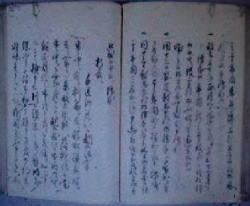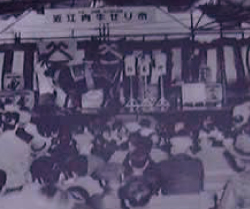History
of Omi Beef
Omi Beef Was Enjoyed by Samurai
Omi Beef has a history dating back approximately 400 years, far longer than that of any other wagyu brand. It is said the Omi Beef was presented to the shoguns in 1590, when Japan was unified into one country. Even during the Edo Era (1603-1868), when the consumption of meat was forbidden, miso-marinated beef was sold as the healthcuring agent Henpongan by the Hikone Domain (currently Shiga Prefecture, the birthplace of Omi Beef), and was presented to the Edo Shogunate. In this way, Omi Beef was served to the samurai who unified Japan and thus has an ancient and honorable origin.
Records show that during the Edo era, beef was dried in the Hikone Domain. Gojoshi Yoriai Tomecho (Gojoshi’s Collective Notebook), Collection of Hikone Castle Museum

Origins of Certified Omi Beef

